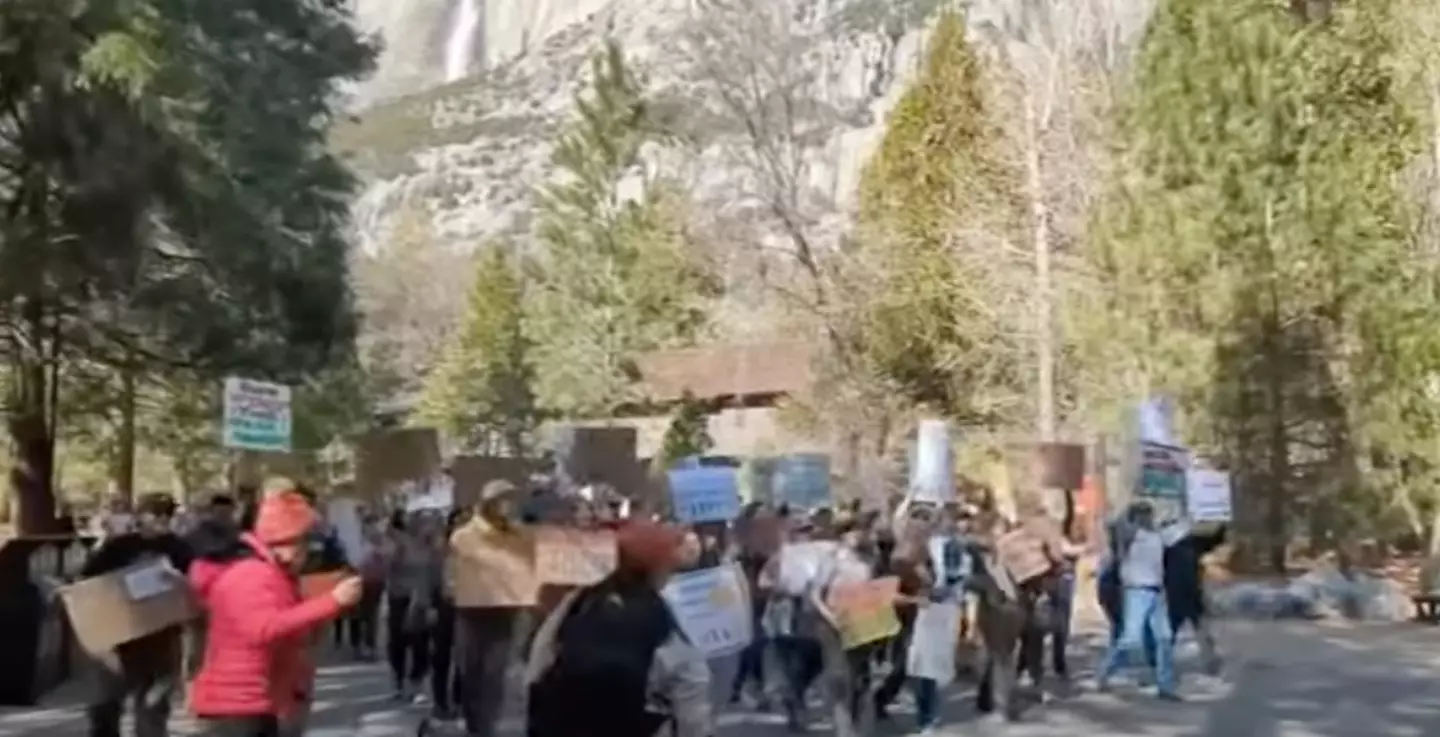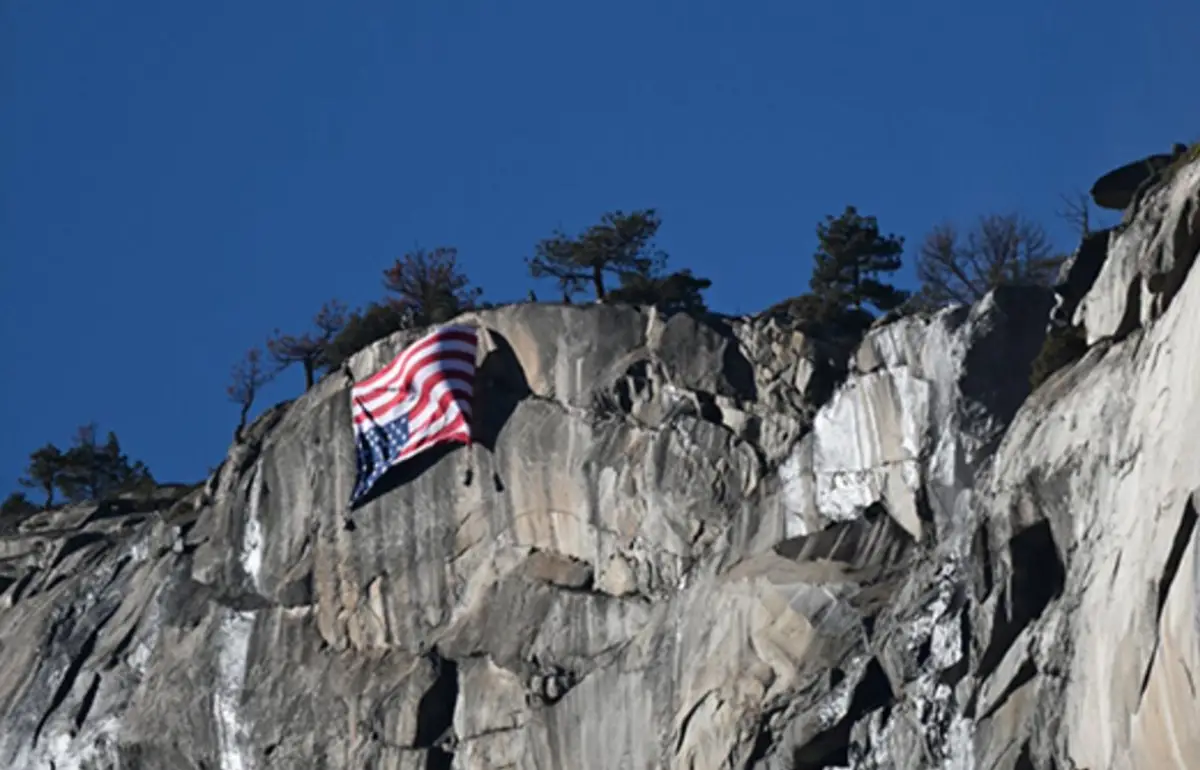Visitors to Yosemite National Park in California were greeted this weekend by a striking and unusual sight: the American flag, hung upside down on the side of the famous El Capitan summit. While the flag’s iconic design is a familiar element in everyday life—from clothing to home décor—its display is governed by specific guidelines. One of these dictates that the flag should never be displayed with the union (the blue field of stars) down, except as a signal of dire distress. And that is exactly the message being sent at Yosemite.
A Deliberate Display of Distress
The upside-down flag was deliberately placed by a group of Yosemite employees on Sunday evening (February 23) at the top of El Capitan—a towering rock formation that rises about 3,000 feet above the surrounding landscape in Mariposa County, California. This particular display was not an accident. Instead, it was a powerful symbolic gesture designed to draw attention to recent job cuts within the National Park Service (NPS).
Under guidelines established by the U.S. Flag Code, the flag should be displayed properly at all times. However, the code allows for an upside-down display when a signal of extreme danger to life or property is needed. In this case, the distress signal comes from those who work tirelessly to maintain and protect the nation’s public lands.
Protest Over Job Cuts
The protest comes in the wake of significant staffing reductions implemented by the Trump administration, which resulted in approximately 1,000 job cuts at the National Park Service. These cuts have deeply affected park and forest employees who worry that diminished staffing levels will lead to deteriorating conditions in the parks. Workers fear that reduced capacity could jeopardize essential services like Search and Rescue operations, maintenance of park facilities, and general safety for millions of visitors.
Gavin Carpenter, a maintenance mechanic at Yosemite who was instrumental in placing the flag, explained his motivation to The San Francisco Chronicle:
“We’re bringing attention to what’s happening to the parks, which are every American’s properties. It’s super important we take care of them, and we’re losing people here, and it’s not sustainable if we want to keep the parks open.”
For Carpenter and his colleagues, the flag is more than just fabric; it is a stark reminder of what they see as a national crisis. The job cuts have had immediate repercussions, with several employees reporting that they lost their positions overnight. The cuts not only impact those working directly for the park but also affect the overall visitor experience—making the parks potentially less safe and less enjoyable for tourists and nature-lovers alike.

Protests have been held at national parks in response to the job cuts (ABC30 Action News)
A Broader Debate on Public Lands
The protest has struck a chord with many who are concerned about the future of America’s national parks. Yosemite, like many public lands, is not only a natural treasure but also a source of national pride and a key component of the country’s cultural heritage. Over the years, the flag’s image has become ubiquitous—gracing everything from T-shirts and phone cases to home décor items. Yet, its proper display is a matter of respect and tradition. By hanging the flag upside down, the park workers are using a familiar symbol in an unfamiliar way to highlight what they believe is a crisis affecting the nation’s public lands.
This act of protest is also a comment on broader federal policies. In response to the backlash over the job cuts, the Trump administration had announced plans to restore at least 50 positions within the National Park Service and hire nearly 3,000 additional seasonal workers. Despite these promises, many employees and advocates fear that the cuts have already taken a toll that may be hard to reverse, leading to long-term impacts on park management and public safety.
Social Media Reaction and Public Sentiment
As soon as the image of the upside-down flag at Yosemite went viral, social media erupted with a mix of humor, shock, and support. Photographer Brittany Colt, whose image helped spread the news online, captured the moment and noted how deeply the protest resonated with the public. Comments ranged from light-hearted jabs about “two left feet” to more serious reflections on the state of public services in the United States.
Critics of the job cuts argue that reducing the workforce at a time when public lands require constant care and protection not only diminishes the quality of the visitor experience but also endangers those who depend on these parks for recreation and tourism. For many, the upside-down flag is a call to action—a vivid reminder that America’s natural heritage is at risk if the government does not invest adequately in its maintenance and protection.
A Call to Preserve National Treasures
The upside-down flag at Yosemite is a powerful, visual symbol of distress, used here to underscore a pressing issue: the sustainability of America’s public lands in the face of federal cutbacks. It is a call from those who work on the front lines of conservation, urging the nation to pay attention to the value of its natural resources and the people who safeguard them.
As visitors continue to explore Yosemite and marvel at its natural beauty, the sight of the upside-down flag serves as a potent reminder that even in our most cherished places, the well-being of these public treasures hangs in the balance. It remains to be seen whether federal policy will change in response to this visible sign of protest, but for now, the flag stands as an unmistakable signal: something is amiss, and it is time for action.

